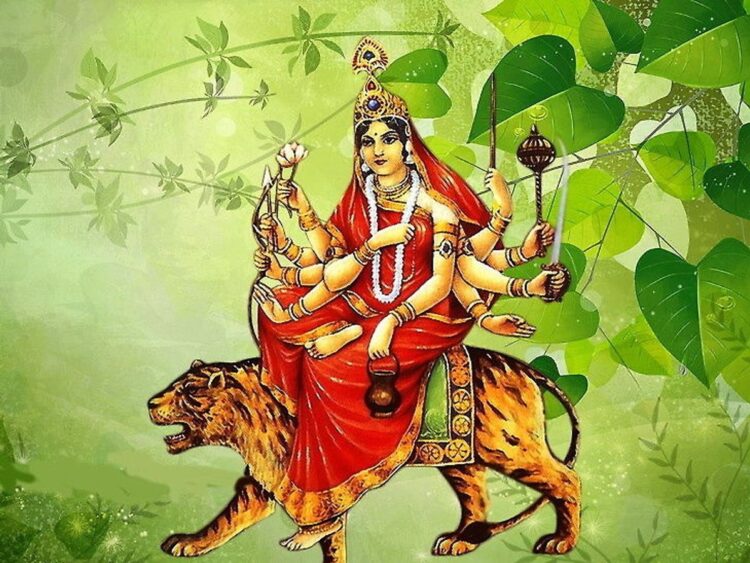Shardiya Navratri, one of the most important festivals in Hinduism started on October 3, 2024. This festival lasts for nine days and devotees worship the nine forms of Maa Durga, culminating with Dussehra on October 12, 2024. The third day of Navratri is dedicated to the worship of Goddess Chandraghanta, incarnation of powerful form of Devi Parvati, the consort of Bhagwan Shiva. The day is marked by rituals and offerings, where devotees seek the blessings of the Goddess for peace, protection and happiness.
Chandraghanta is the married form of Parvati, who is said to have adorned a crescent moon on her forehead, giving her name ‘Chandraghanta’ (Chandra meaning moon, and ghanta meaning bell). This crescent moon symbolizes her calm and peaceful demeanor. Chandraghanta is often depicted with ten arms, carrying a variety of weapons, including a trident, mace, sword, and a bell, symbolizing her readiness to fight for righteousness while maintaining inner peace.
According to the Shiva Purana, after Goddess Parvati married God Shiva, an evil demon named Tarkasura, who was foretold to be defeated by the son of Shiva and Parvati, plotted to kill Parvati. He sent a demon bat, Jatukasur, along with a massive army of bats, to attack her. Goddess Parvati transformed into the warrior Ma Chandraghanta. She carried the crescent moon on her forehead, courtesy of Chandra Dev, to light her way in the battle. Armed with her bell, she scared away the bat army with its sound and killed Jatukasur using her trident, bringing peace once again.
Goddess Chandraghanta is not only a warrior who fights evil but also embodies motherly qualities of warmth, care and compassion. Her golden complexion and her fierce yet peaceful expression represents her dual nature- aggressive and protective when dealing with negative forces, but gentle and loving toward her devotees. She blesses her followers with courage, beauty and serenity. Her ten arms carry array of weapons, including a trident (trishula), sword (khadak), and bow and arrow, symbolizing her role as a defender of righteousness. She holds a lotus, symbolizing purity, and a rosary, denoting spirituality.
Devotees start the third day of Navratri by waking up early, taking a bath, and donning clean, yellow attire, symbolizing happiness and positivity. A ghee lamp and incense sticks are lit and the worship starts by offering flowers and milk-based delicacies such as kheer to the Goddess. It’s common to donate these offerings to temples or distribute them among the poor after offering them to the deity, as Chandraghanta is believed to relieve suffering and bring joy to her devotees.
“ALSO READ: Devotees Worship Goddess Brahmacharini On The Second Day Of Navratri”

















Comments